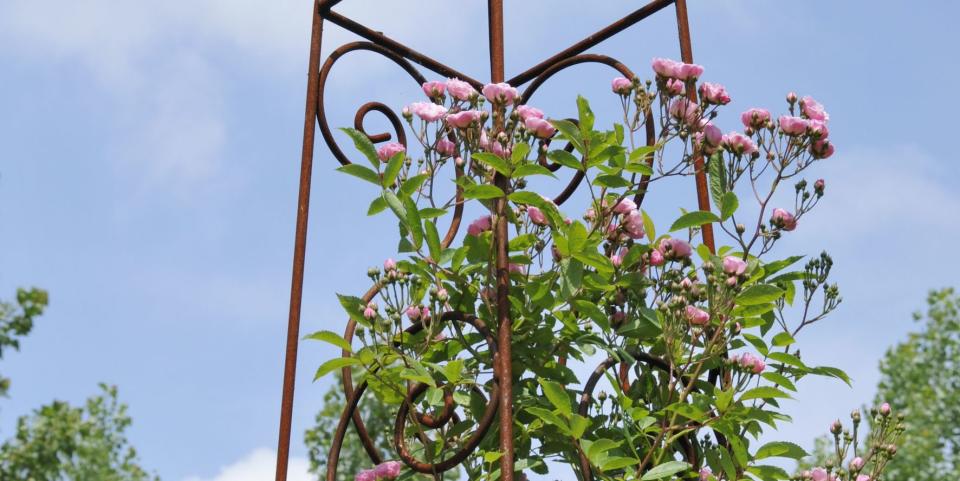Plant supports: how to protect climbing plants, fruits and borders

Plant supports are often the secret to a flourishing garden, helping to keep plants and flowers from drooping, aiding in the growth of climbers, and offering simple but effective protection for heavy-headed plants that are prone to breaking in the wind and rain.
Several plants which tend to grow tall, such as tomatoes and raspberries, need support to keep them off the ground and to ensure they don't flop and break without being aggressively restrained. This also applies to flowers such as roses, while the climbing plant wisteria needs support to grow in a certain direction and shape.
Plant supports can come in many shapes and sizes, so it really depends on your garden and the kind of plants they will be supporting, to ensure you choose the best one for your needs.
Here are five plant support ideas to explore.
1. Trellis
Trellises are a popular choice for training climbing plants. If your plant is likely to be quite heavy you should choose a thicker trellis than those needed for daintier plants. These can come in traditional styles, such as wood lattice, or can be made into more extravagant designs. Typically, a trellis can either be placed onto a wall or fence, or stuck into the ground to add more dimension to a garden.
2. Stakes
A simple stake, made from wood or metal, should be placed in the ground when the seeds are first planted, or the plant is first put into the ground. They could be a straight stake, or have a circular support, known as plant support rings. As the plants grow, use twine or strips of fabric loosely tied to keep the plants growing straight.
3. Arches
Looking for a plant support that will also improve the aesthetic of your outdoor space? A garden arch can provide just this, and looks great in the centre of your garden or at an entrance to define a pathway, as is typically seen with beautiful rose arches. Archways can be made out of metal or wood. Although they can look very bare at first, once the plants and flowers have grown around it, the archway will soon come to life.
4. Obelisks/Cages
If you don’t want to tie the stems of your plants to a support, then a tower obelisk or cages may be the best option. You can purchase them in either a circular or square shape, or as a DIY option, you could make your own with wood and pliable metal. The cage is useful in that it stops the plant from growing away from the root and bending.
5. Weave
If you have a lot of plants which need supporting, such as tomatoes, a weave is probably the quickest and easiest way to provide support. Simply use string or twine strung at different levels between two stakes at opposite ends of the row. The plants will then grow between the woven string.
Follow House Beautiful on TikTok and Instagram.
You Might Also Like

 Yahoo Finance
Yahoo Finance 
